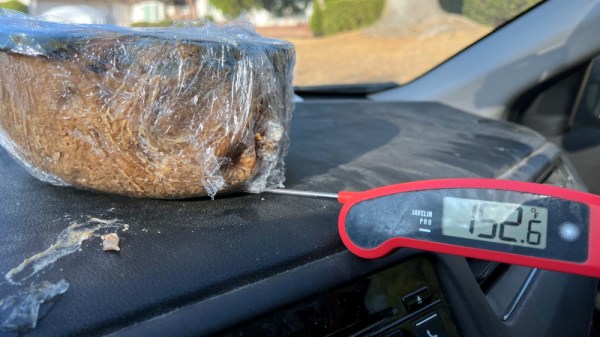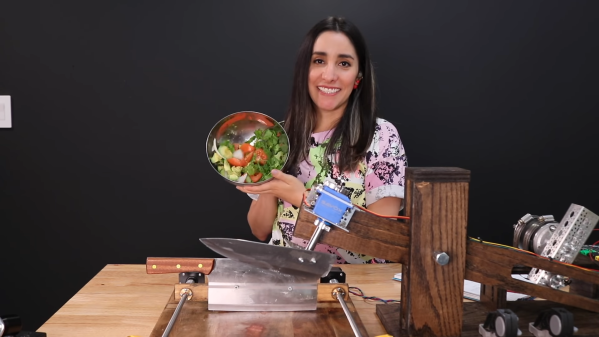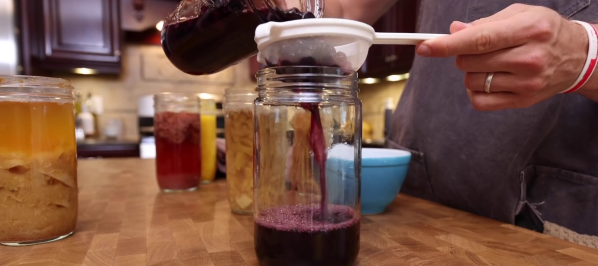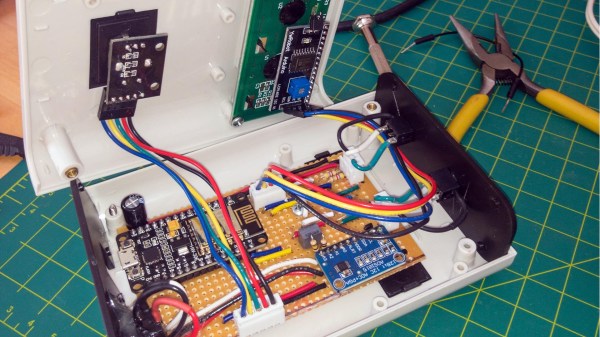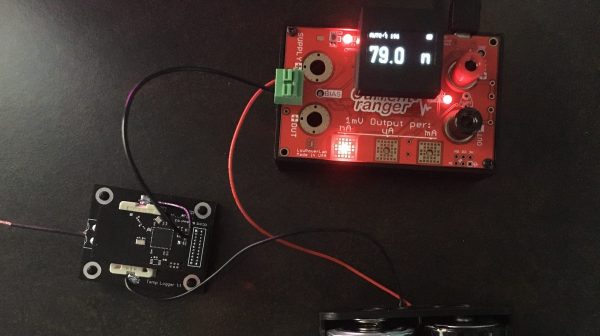In hot weather, those of us who drive are familiar with the sensation of getting into the car and having it feel like an oven inside. A car is a essentially sealed metal box with large windows, thus on a sunny summer day it has more in common with a greenhouse, and in a heatwave this can become unbearable. But does it get hot enough for cooking? [Julian Lozos] aimed to find out, by cooking Icelandic rúgbrauð using only a 2016 Honda and the California sunshine.
Rúgbrauð is a traditional Icelandic rye bread that’s traditionally cooked by geothermal energy buried in the ground for around a day in proximity to a hot spring. A car dashboard gets pretty hot in a California heatwave, so it’s not unreasonable to expect that it might replicate this environment. He parked the Honda on a street in the sun, placed a pot full of dough on the dashboard, and waited.
The maximum temperature measured was 86.5 C (187 F), but unfortunately the sun didn’t stay high enough to maintain that temperature for the required time. After two days in the car the crust was cooked but the interior was still gooey, so the experiment can’t be said to have been successful. He does make the point though that a less traditional and much thinner loaf using a wide and flat tray might have delivered a better result.
We’re intrigued by this experiment, almost enough to try something like it ourselves were the summer not beginning to wane in these more northerly climes. Have any of you tried cooking in a hot car, or would we need a solar oven? Give us your views in the comments.

